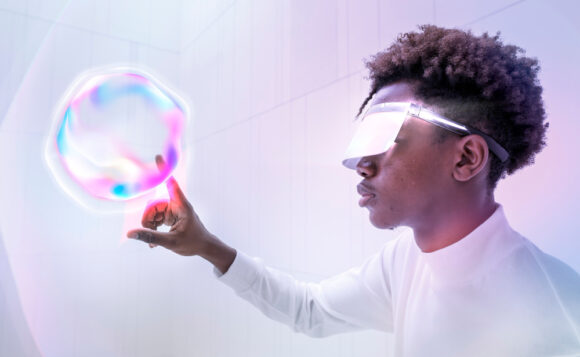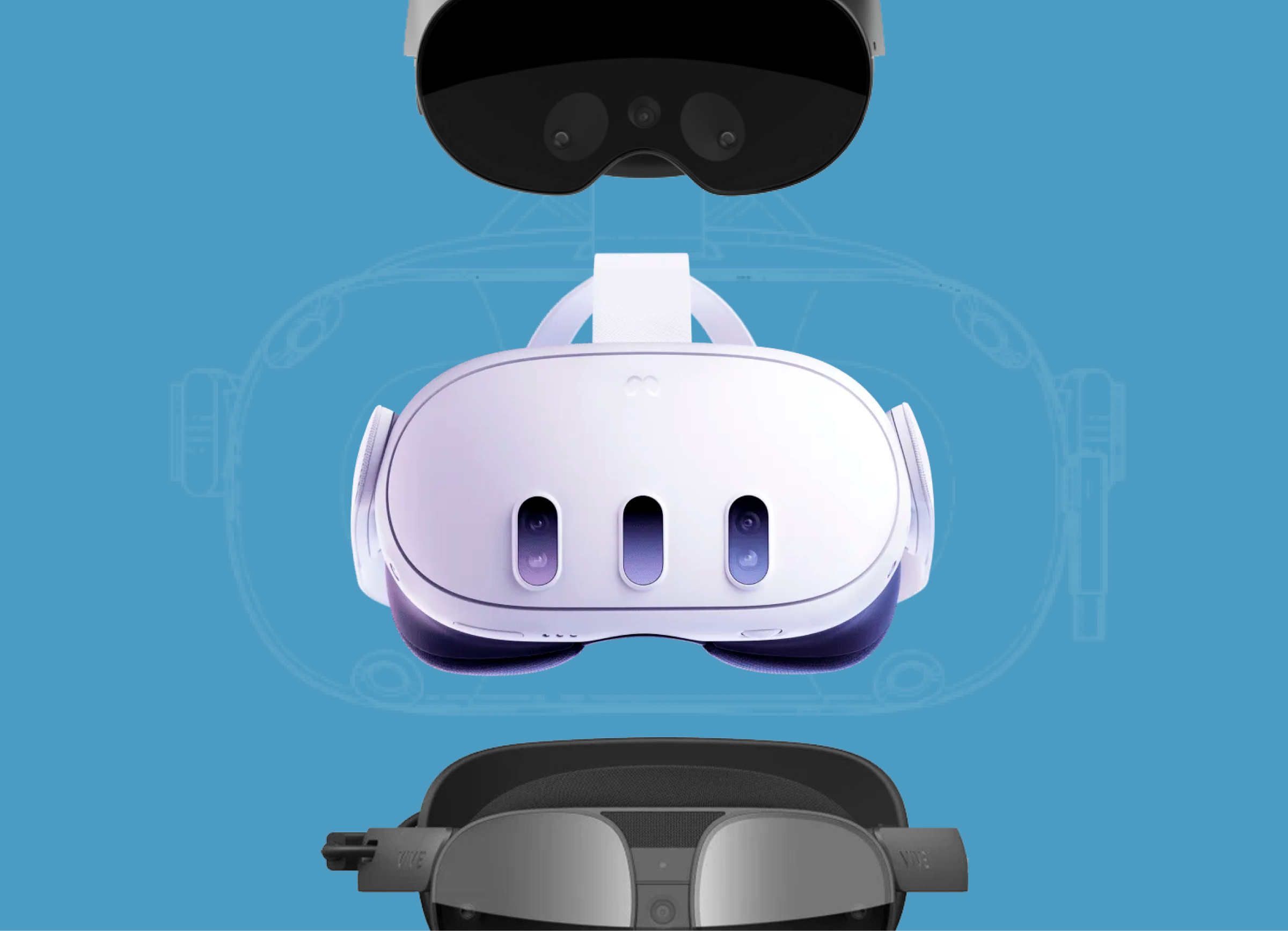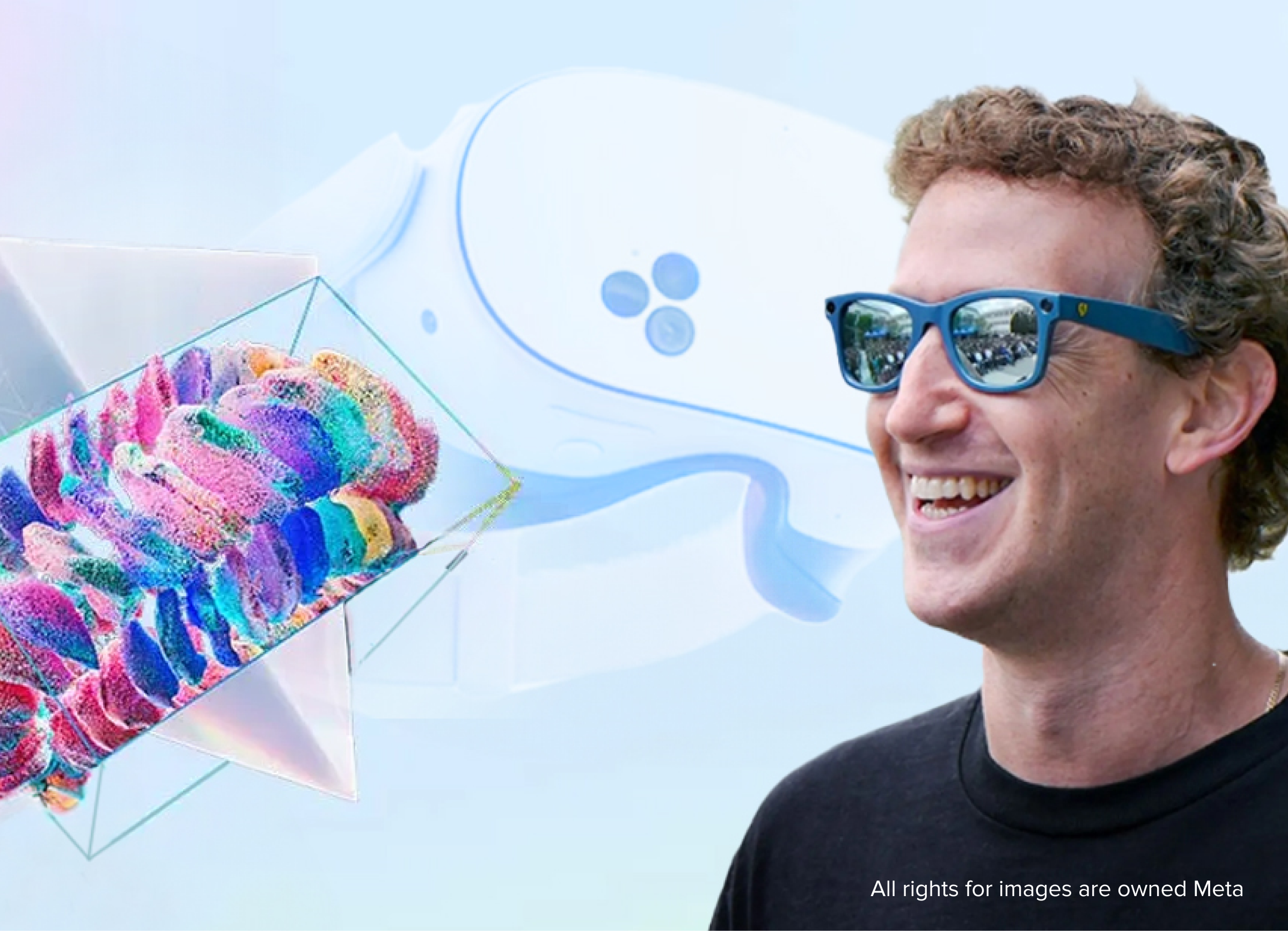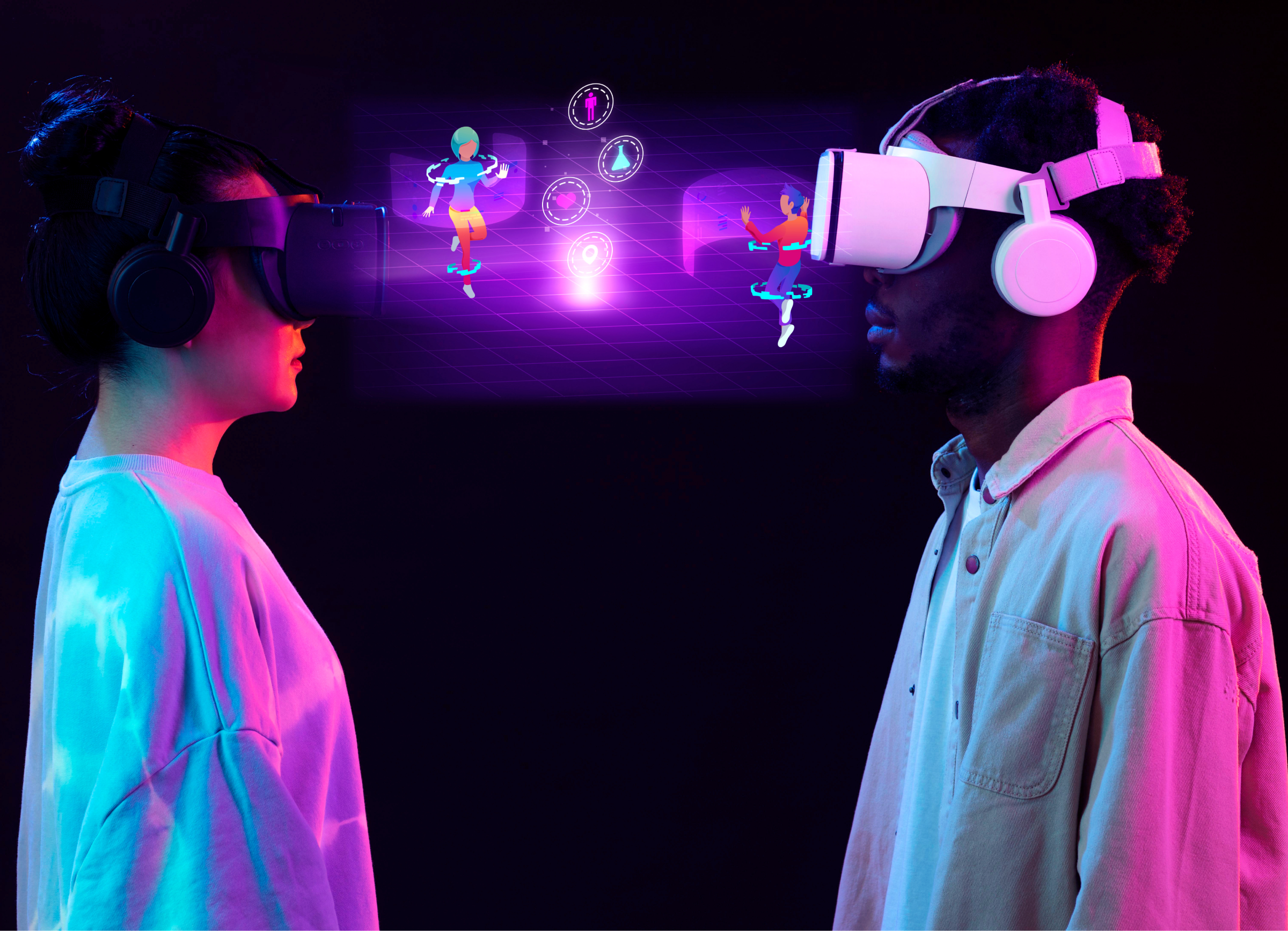
Immersive technologies are gradually becoming common in various business areas. Mixed and augmented reality, spatial computing, etc., allow you to automate processes at enterprises, as well as facilitate remote work. These opportunities have already attracted many IT companies, such as Apple, Meta, and Microsoft.
According to Mordor Intelligence, the value of the augmented reality market will grow from 105.58 to 472.39 billion dollars in 2023–2028.
In this post, we’ll take a closer look at the specifications of the Apple Vision Pro, Magic Leap, Meta Quest Pro, and Microsoft HoloLens. We will also examine the advantages and disadvantages of these devices and share the experience of our specialists.
Taking a Closer Look at Microsoft HoloLens 2
Let’s start with Microsoft Hololens 2, MR glasses for business. HoloLens 2 is a Microsoft device, which was created mainly for work in such fields as manufacturing, medicine, construction, architecture, design, etc. The main areas of use of Microsoft HoloLens 2 include MR training, development of models and digital twins, improvement of the safety of the working environment at factories, etc.
The official release date of the glasses is February 24, 2019.
Microsoft HoloLens 2 looks like glasses with two transparent lenses digital content is superimposed on. The weight of these glasses is 566 grams.
This device supports mixed reality, a technology that combines virtual reality with the real world and provides more opportunities to interact with a digital object. That is, they project digital 3D objects onto the real world and allow a user to digitize real objects.
Read also: What’s The Difference Between VR, AR and MR
Microsoft HoloLens 2, as well as the previous model, controller-free hands are involved, which makes it much easier to operate digital and real objects at the same time. Eye movements are tracked using infrared cameras, while four built-in cameras monitor head movements. Also, the glasses themselves are able to scan the location to improve the placement of digital content with the help of an internal accelerometer, gyroscope, and magnetometer.
Microsoft HoloLens 2 works on the Windows 10 operating system, specially adapted for the glasses. The processor for HoloLens 2 is a Qualcomm Snapdragon 850 chip, a common chip model among a good deal of VR/AR glasses.
The Microsoft HoloLens 2 battery can withstand 2–3 hours of active work.
Breaking Barriers with Magic Leap 2
These mixed-reality glasses were released in September 2022 and are considered to be one of the main competitors of Microsoft HoloLens 2. Magic Leap 2, for example, is both more powerful and lighter than Microsoft’s product, as it has an AMD Zen 2 quad-core processor and an RDNA 2 video card. The weight of Magic Leap 2 is only 260 grams. A glasses user can thus perform tasks faster and more efficiently with greater comfort while wearing Magic Leap 2, which even outwardly resembles sunglasses in design.
The device is designed for work in various fields: construction, medicine, mechanical engineering, architecture, and design, etc.
Magic Leap 2 has several areas of use in business: remote collaboration, remote assistance, training, and visualization of models for presentation.
This device includes an option to darken the space so that the user can see more details of the digital model.
Magic Leap 2, like Microsoft’s HoloLens 2, includes hand and eye tracking as well as voice input. But unlike Microsoft’s device, they also come bundled with controllers, each having a camera that makes it easier to track movements and objects. The option of using a virtual keyboard is also available.
The kit also comes with a separate connected processor that a user wears on the hip.
These glasses have Magic Leap OS based on Android.
Meta Quest Pro: Redefining MR Experience
The latest MR headset by Meta, introduced in October 2022, has a wider range of functions. Given the company’s core policy, these glasses were created for the metaverse, a fully immersive environment. However, working with Meta Quest Pro also involves the use of augmented and mixed reality.
Unlike Hololens 2 and Magic Leap 2, Meta Quest Pro is designed as virtual reality glasses — instead of transparent lenses, the device uses displays and cameras.
Speaking about work in MR, Meta Quest Pro offers several options:
- Remote communication with colleagues. It is available through both video conferences and with the help of digital avatars. Several employees can be in the digital space at the same time, both as an avatar and through video.
- Bringing your laptop or PC into the digital space is one of Quest Pro’s best-known features. Instead of being limited to one screen of the device, you can wear MR glasses and put three additional large screens on the laptop.
In addition, Meta Quest Pro is actively used for entertainment. For example, you can play various MR games in them. For instance, I Expect You To Die uses digital traps to turn the living room into a quest room. Or you can watch movies and YouTube videos on a large digital screen in mixed reality.
The Quest Pro can hold a charge for one to three hours. The processor of Meta Quest Pro is Snapdragon XR2+, which has more power than other models of VR glasses and is 50% more powerful than Quest 2.
The VR glasses come with two controllers and a charger. Unlike previous Meta (Oculus) models, the battery is located in the back of the device, which creates an even load on the user’s head. In general, the weight of the glasses is 720 grams.
Unleashing the Power of Apple Vision Pro
Apple Vision Pro is a new product by Apple, which was announced at the beginning of June during the last conference of the company’s WWDC 2023. These are spatial computing glasses that many developers and enthusiasts have been waiting for a very long time. Consequently,e there were a lot of rumors and discussions about them shortly before their presentation.
According to Tim Cook, the head of the company, Apple Vision Pro is “an innovative spatial computer that seamlessly combines digital content and the real world”. The digital space with applications has a 3D format, reacts to the amount of light in the room, and can even cast a shadow on real objects. And with the help of Spatial Audio, the user can hear sounds as if he were really in one place or another. A Vision Pro user is not limited exclusively to the digital space, they can communicate with people who are not wearing a virtual reality helmet.
The latest glasses from Apple are designed for work in enterprises (for example, remote work or training) and for private use, particularly entertainment content. For example, in the glasses, video viewing using the “panorama” function is available, as well as an increase in the virtual screen up to 100 feet. This provides a content viewing experience close to a cinema session. At the same time, a user can independently choose a digital immersive environment for watching movies. For example, forest, space, desert, etc. Vision Pro also includes the function of recording AR projections of one’s surroundings — the so-called AR memories.
Apple expects its MR glasses to be a good entertainment device, given that they have signed a deal with Disney to create future immersive content.
The Apple Vision Pro doesn’t have controllers like many other VR glasses, but it does include eye, hand, and voice controls.
The peculiarity of these glasses is also that this is the first model that has its own operating system, visionOS.
Also, Apple Vision Pro has additional functions in the form of a portable separate battery that connects to the glasses and its charge is enough for 2 hours.
Expert Opinions on Apple Vision Pro
Qualium Systems developers already have successful experience with Magic Leap 2 and Microsoft Hololens 2 and believe that working with these models of smart glasses is an effective basis for working with Apple Vision Pro.
Alex Volkov, the head of the XR department, highlights that mixed reality has specific nuances in different models of glasses, although, in fact, it is the same technology.
“For example, if you have experience working with iPhone applications, it will also be easier for you to develop applications for Android. The same thing if you know how to develop mobile applications for iPhone or Windows. Simply because it is one and the same direction. There is an opportunity to take into account some points from UX or UI, and define which of these points are better, and which ones are worse. So, in general, some codes or libraries could be radically different, but the features themselves are similar”, Volkov said.
Qualium Systems’ Future Strategies for Apple Vision Pro
In the near future, the developers of our company plan to join the work with the visionOS SDK, which will perfectly know all the possibilities of the new operating system. So, if you want to order high-quality apps for iOS or Android, contact an experienced development team that has worked with a considerable number of frameworks and SDKs.
Immersive technologies that combine digital elements and real space are already becoming part of the everyday life of enterprise employees. Working with digital technologies, a headset user doesn’t have to be wholly disconnected from the real world in order to effectively complete the tasks.
Image: Freepik



